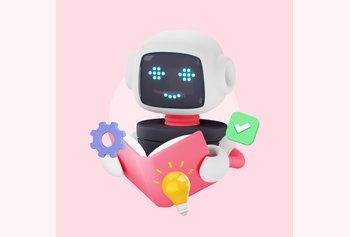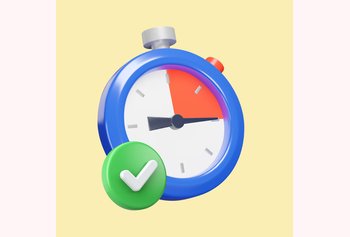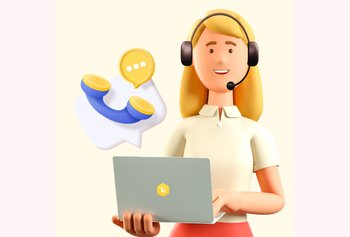
Table of contents
10,000+ teams use Hiver to delight their customers!

What is Customer Journey Optimization & How To Do It?

Table of contents
Every customer embarks on a journey with your brand. A journey that shapes their perception of your products and/or services.
This customer journey begins the moment they first encounter your brand, perhaps through a marketing ad or a billboard. There onwards, it encompasses every interaction they have with your business, from navigating your website or walking into your store to post-sales customer support.
Every phase of this journey presents an opportunity for your business to make a lasting impression. That’s why it’s important to map and optimize your customer journey.
This article will delve into the significance of customer journey optimization. We will explore how each stage, from initial discovery to loyal advocacy, plays a crucial role in building enduring customer relationships.
Key Takeaways:
- Customer Journey Optimization Defined: CJO is a strategic process aimed at enhancing customer interactions at every touchpoint from initial awareness to post-purchase support, improving overall satisfaction and revenue.
- Assessment of Customer Needs: Understanding customer demographics, pain points, and preferences is vital for tailoring their journey and improving their experience with your brand.
- Importance of Buyer Persona Identification: Recognizing different customer personas, such as small business owners or executives, helps in addressing their unique needs and enhancing customer experience.
- Identifying Customer Pain Points: Pinpointing and addressing specific customer issues is crucial for demonstrating empathy and readiness to provide solutions.
- Optimizing Each Customer Journey Stage: Effective optimization involves enhancing each stage of the journey – Awareness, Consideration, Acquisition, Implementation, and Advocacy – with targeted strategies.
- Utilizing Tools for Effective Communication: Tools like Hiver streamline customer communication and support, facilitating better management and resolution of customer queries.
Table of Contents
- What Is Customer Journey Optimization?
- Steps To Boost Your Customer Journey Optimization
- Why Is It Important To Optimize Your Customer Journey?
- From Acquisition to Advocacy
What Is Customer Journey Optimization?
Customer Journey Optimization (CJO) is a strategic approach focused on enhancing customer interaction with a business – from initial awareness to post-purchase support. It involves understanding and mapping the customer’s path through various touchpoints and then systematically improving those interactions to enhance customer experience, satisfaction, and finally business performance.
To broadly explain, CJO is about putting oneself in the customer’s shoes to comprehend their needs, preferences, and pain points. It’s an ongoing process that involves collecting and analyzing data across all customer interactions to identify areas of improvement and opportunities to delight customers.
Steps To Boost Your Customer Journey Optimization
Optimizing the customer journey is a multi-faceted process that requires careful planning and execution. It’s about enhancing every touchpoint in a customer’s interaction with your business to create a seamless and satisfying experience.
This section is divided into two major parts:
- Assessing Your Customer – This will help you understand who your customers are, what are their pain points, etc. so that you can find opportunities to optimize their journey.
- Mapping Your Customer Journey – This section will help you understand the stages of your customer journey and practical steps to optimize it.
A. Assessing Your Customer
Have you ever tried contactingcustomer support and got a canned response? It probably wasn’t a good feeling, was it?
The most important thing to note if you want to improve your customer’s experience is that everyone likes it when their specific needs and situations are taken into consideration. And so, the first step in effectively engaging your target audience is to assess your customer.
You can use any method you want, like surveys, interviews, etc., but make sure you know the answer to these four questions at the end of the day:
- Who is your customer?
- What problems are they encountering?
- How can you help your customer?
- Where can you get in touch with them?
Let’s discuss this in more detail below.
1. Figure out your buyer persona
Who is your customer?
Is it a small business owner? An executive in a large company? A student? Buyers have different motivations and considerations when making a purchase.
For instance, if you’re providing a VoIP solution, the concerns and needs will vary based on the customer’s context. A small business owner, for example, might prioritize how the solution can offer cost-effectiveness and simplicity in integration with their existing systems. They are likely to look for a VoIP service that is easy to set up, user-friendly, and can scale as their business grows, without incurring significant additional costs.
On the contrary, an IT manager at a large corporation might focus on the solution’s capacity to handle high volumes of traffic, its reliability, and advanced features like integration with enterprise-level CRM software, or data security compliance. Their primary concern could be around ensuring minimal disruption during the transition to the new system and how the solution aligns with the broader IT infrastructure and long-term strategic goals of the company.
If you don’t know your customers, you won’t be able to address their issues adequately, leading to a poor customer experience that will discourage them from advocating for your brand.
2. Identify Customer Pain Points
What problems are your customers experiencing?
Pain points are specific issues your customers are experiencing or may encounter in the future. As already discussed, every buyer has a different set of needs and problems. Let’s take the same example of the VoIP service provider. A common pain point for small businesses might be the high cost and complexity of traditional phone systems. Recognizing this, the provider can offer an affordable, easy-to-install VoIP solution tailored for small businesses. This effectively addresses their specific need for cost-effective and straightforward communication solutions.
Identifying pain points specific to the customer’s situation will show them that you understand their issues and are ready to help.
Recommended read: How to Identify and Overcome Customer Pain Points?
3. Find Opportunities to Offer Solutions
How can you help your customer?
Once you’ve identified your customer’s pain points, look at your own products and ask, “How can my products help the customer?”
For example, a potential customer might only be interested in a company’s video meeting solution during the initial inquiry stage. But if one of their other pain points is poor team communication, you can dig in further to explore more of their pain points. Perhaps they are looking for a more advanced solution like messaging, file sharing, and maintaining consistent communication channels among team members.
This is where you can offer a more unified communication solution to them. You can explain how to your customer that a unified communications solution integrates various communication tools—such as instant messaging, voice calls, video conferencing, email, and file sharing—into a single platform. This integration allows for seamless communication and collaboration among team members, regardless of their location – something your customers are probably looking for!
This way, showing that you understand your customer and are actively looking for ways to make their lives easier is a great motivator for advocacy.
Here’s an example of a landing page byEachnight that collects customer data and suggests the best product based on the customer’s preference.
4. Determine Customer Touchpoints
Where can you get in touch with them?
A touchpoint is any place where your customer interacts with your brand and is an important part of Customer Journey Optimization. This could be anywhere— your website, blog, live chat widget on the app, ormarketing emails. Taking note of this could give you insight into your customer’s behavior and preferences. Where do they interact with your brand the most? What articles are they engaging with?
Engage with your customers through multiple touchpoints, and ensure that communication between you and them is easy to understand and consistent.
For instance, a tech company can use social media, email, and a customer support hotline to interact with customers, ensuring clear, concise, and consistent messaging across all channels. This multichannel support system with a consistent messaging paves way for a seamless customer journey optimization.
Now, let’s check out how you can optimize every stage of the customer journey and provide effective solutions to your clients.
B. Mapping Out Your Customer Journey
As its name suggests, the customer journey is a timeline of a customer’s history with a company. The road from awareness to advocacy is long and comes in several stages, each with its own unique set of challenges. This is why it’s important to not only understand your customers but also to know where they are in their customer journey.
Pro tip: Using a timeline software to create a quick visualization of your customer journey is a simple hack to create a customer timeline fast and easy.
Here is a brief explanation of each stage in the customer journey map:
1. Awareness
This stage is where your prospects become aware of your brand’s existence. At this stage, they’re probably seeing your brand in ads or promotional campaigns. If they think your product can solve an issue they’re experiencing, they’ll move on to the next stage.
Here’s what you can do for customer journey optimization at this stage:
- Identifying Your Audience: This involves creating detailed customer personas that reflect your ideal customer’s demographics, interests, and behavior patterns. For instance, a business specializing in sustainable fashion would focus on eco-conscious individuals who prioritize environmental impact in their purchasing decisions.
- Crafting Targeted Content: Once you know your audience, create content that resonates with them. This could include educational blog posts, engaging social media content, or informative videos. The content should be designed to not only attract attention but also to educate your audience about yout products and the values your brand stands for.
- Leveraging SEO and Social Media: Optimizing your content for search engines (SEO) is critical to ensure visibility. Utilize keywords that your target audience is likely to search for. In addition, actively engage on social media platforms where your audience spends time. For example, a tech company might use Linkedin and Twitter to share customer success stories, feature launches, and more. They might use their blog section to write awareness-driving articles such as ‘Top customer support software in 2024’.
- Utilizing Paid Advertising Smartly: Paid advertising, whether through social media ads, Google AdWords, or other platforms, can be a powerful tool in the Awareness stage. The key is to target your ads precisely to reach your intended audience. For instance, a health and wellness app might use Instagram ads targeting users who follow fitness-related profiles.
- Monitoring and Adapting: Finally, it’s essential to monitor the performance of your awareness strategies. Use analytics tools to track which channels bring the most traffic, what content resonates with your audience, and how effectively your paid ads are converting. This data should inform ongoing adjustments to your strategies.
Recommended read: Decoding Gmail Analytics
2. Consideration
In this stage, your prospect is starting to research whether your products are a good fit for their needs. They’re reading your blogs, watching reviews about your products, and assessing whether their own resources can accommodate the change. Inquiries are usually made during this stage.
Here are a couple of ways through which you can optimize the customer journey at this point:
- Developing Engaging and Informative Content: It’s important to provide content that answers potential customers’ questions about your product or service. For example, a business specializing in smart home devices could create comparison guides, detailed product descriptions, video tutorials, and FAQs that highlight the features and benefits of their products compared to conventional home devices.
- Enhancing User Experience on Digital Platforms: Ensuring a seamless and intuitive user experience on your website or app is crucial. This includes easy navigation, clear call to action buttons, and fast loading times. For instance, an online fashion retailer could implement a user-friendly interface with high-quality product images, size guides, and easy-to-find customer reviews.
- Offering Live Demos or Free Trials: Providing customers with a firsthand experience of your product or service can be incredibly effective. A software company, for instance, could offer a free trial or live demo to showcase the capabilities and user-friendliness of their software.
- Utilizing Customer Testimonials and Case Studies: Sharing success stories and testimonials from satisfied customers can significantly influence potential customers. A B2B service provider might display case studies on their website demonstrating how their services have helped other businesses improve efficiency or profitability.
3. Acquisition or Purchase
If your sales and marketing teams are successful in convincing your prospect to make a purchase, they move on to the acquisition stage. This stage is all about assisting your customer through their purchase. Help them with transitioning, installing, or setting up equipment to ensure that the purchase is as seamless as possible.
Here are some of the ways through which you optimize your customer journey during the acquisition stage:
- Simplifying the Purchase Process: The key is to make the buying process as straightforward as possible. For example, an online clothing retailer could streamline their checkout process by by ensuring the checkout experience has as few steps as possible and by offering various payment options.
- Clear and Transparent Pricing: Customers should easily find and understand pricing information. A SaaS (Software as a Service) company, for instance, can clearly outline their pricing tiers, what each tier offers, and include a FAQ section for any pricing queries.
- Providing Multiple Payment Options: Offering a variety of payment methods caters to the preferences of different customers. An electronics store, for example, might offer customers the option to pay via credit cards, PayPal, and even installments for more expensive items.
- Offering Incentives: Discounts, limited-time offers, or free shipping can be powerful incentives to encourage purchase. A home furnishing business could offer a discount on the first purchase or free delivery on orders over a certain amount.
- Trust-Building Measures: Displaying security badges, customer reviews, and money-back guarantees can build trust. For instance, an online supplement store could include verified customer reviews and a clear return policy to assure customers of product quality and service reliability.
Recommended read: 7 Actionable Tips To Improve Customer Focus
4. Implementation
This is the stage where your customer is actively using your product. In this stage, it’s important to be available for any troubleshooting or support requests from your customer. The goal here is to retain the customer and prevent them from canceling a subscription or switching to a competitor.
Here’s what you can do to optimize your customer journey at this stage:
- Providing Comprehensive Onboarding: A good onboarding process educates customers about how to best use the product or service. For instance, a company offering project management software might provide a series of interactive tutorials and webinars to help new users understand how to use the software effectively in their work environment.
- Fast and Reliable Customer Support: Providing immediate assistance for any product or service-related queries is essential. A travel booking company could offer 24/7 support through chat or phone to assist with any booking issues or questions.
- Gathering and Acting on Feedback: Actively seeking customer feedback and acting on it is crucial. A fitness app could regularly solicit user feedback through in-app surveys and use this information to make updates that enhance user experience and functionality.
- Providing Regular Updates and Improvements: Continuously improving your product based on customer feedback and technological advancements is essential. An e-commerce platform, for example, might regularly update its interface and features to enhance user experience based on customer usage patterns and suggestions.
- Personalized Communication: Tailoring communication based on customer preferences and usage patterns can make them feel valued. A subscription-based food delivery service might send personalized meal recommendations based on past orders and dietary preferences.
- Ensuring Reliability and Quality: Maintaining high standards of quality and reliability is key. A car manufacturer must ensure that their vehicles are not only high in quality when purchased but also continue to be reliable and efficient over time.
Did you know:
As much as 89% of customers publicly share their poor customer support experiences, highlighting the critical role of customer service in brand reputation
5. Advocacy
If a customer is satisfied with your services, they’ll recommend and promote your business, turning into advocates. So, here’s how you can make the best use of this stage:
- Encouraging Reviews and Testimonials: Encourage happy customers to leave reviews or testimonials. For example, a boutique hotel might follow up with guests after their stay, inviting them to share their experience on travel review websites or social media.
- Creating a Referral Program: Implementing a referral program can incentivize customers to recommend your products or services. A fitness center, for example, could offer special discounts to members who refer friends who then sign up.
- Utilizing User-Generated Content: Showcasing user-generated content, like customer photos or stories, can be a powerful tool. A clothing brand might encourage customers to post pictures of themselves wearing the brand’s clothes and feature these images on their website and social media channels.
- Engaging with Customers on Social Media: Actively engaging with customers on social media, responding to their posts, and featuring their content can foster a sense of community and belonging. A pet food company could regularly feature customer stories and pet photos on their social channels.
- Offering Loyalty Programs: Loyalty programs reward repeat customers and deepen their connection to your brand. An online bookstore could offer points for each purchase, which customers can redeem for discounts on future orders.
- Personalized Communication and Offers: Continuing to provide personalized communication and exclusive offers keeps customers feeling valued. A gourmet coffee subscription service might send special offers or early access to new products to their long-term subscribers.
- Building a Community: Creating a brand community where customers can connect and share experiences can foster advocacy. A gaming console company might create an online forum or organize meetups and events for gamers.
Recommended read: How to Create a Successful Customer Loyalty Program
Why Is It Important To Optimize Your Customer Journey?
Optimizing the customer journey is not just about improving a sales process; it’s about creating a holistic and satisfying experience for your customers at every touchpoint. This approach can lead to numerous benefits for a business, ranging from increased customer satisfaction to higher revenue.
Below are key reasons why optimizing your customer journey is essential:
1. Enhanced Customer Experience: A well-optimized journey ensures a smooth, enjoyable experience for customers. For instance, a streamlined online shopping process with easy navigation and quick checkout can leave customers feeling positive about a retail brand, encouraging repeat business.
2. Increased Customer Loyalty and Retention: Satisfied customers are more likely to be loyal and make repeat purchases. A software company providing excellent ongoing and proactive support can maintain a loyal customer base, reducing churn.
3. Higher Conversion Rates: A customer journey that is intuitive and tailored to user needs can significantly boost conversion rates. For example, an e-commerce website using personalized recommendations based on browsing history can lead to more customers making purchases.
4. Positive Word-of-Mouth and Brand Advocacy:Happy customers often become brand advocates. A fitness brand that engages with its customers and provides them with valuable health tips can see an increase in referrals and positive reviews.
5. Valuable Insights from Customer Feedback: Optimizing the customer journey involves listening to customer feedback, which can provide valuable insights for future improvements. A restaurant chain that actively solicits and acts on customer feedback can continually enhance its menu and service quality.
6. Competitive Advantage: A business that provides a superior customer journey can stand out from its competitors. A mobile phone carrier offering transparent pricing and excellent customer service can differentiate themselves in a highly competitive market.
7. Improved Customer Lifetime Value (CLV): A better customer experience leads to increased customer loyalty, resulting in a higher CLV. A car dealership with an exceptional after-sales service and loyalty program could see customers returning for their next car purchase.
8. Efficient Resource Utilization: By understanding and optimizing the customer journey, businesses can allocate resources more efficiently. An online retailer analyzing customer behavior can better stock products and plan marketing campaigns, reducing waste and increasing profitability.
Recommended read: How to Use Customer Service Data For Strategy Creation and Growth
From Acquisition to Advocacy
Optimizing the customer journey ultimately boils down to being in your customers’ shoes and helping them solve a problem. This applies to every stage of the customer journey.
For instance, at the acquisition and implementation stages, what are the problems you’re most likely to encounter? Probably installation and troubleshooting issues. How can you resolve this? By maintaining clear communication lines with your customers during their transition and usage period.
To help with this, tools like Hiver become invaluable. Hiver enables businesses to streamline customer communication directly from Gmail, making it easier to manage and respond to customer queries.
You can assign, track, and collaborate on customer queries and most importantly, have complete visibility into every communication you have with customers.
Sounds interesting? Check it out
FAQs
- How does CJO enhance business performance?
CJO helps improve quality of interactions at every stage of the customers’ journey, leading to better business outcomes.
- Why is understanding the customer important in CJO?
Knowing the customer allows businesses to tailor experiences to their specific needs and expectations.
- What’s the significance of identifying customer pain points?
Identifying and addressing customer pain points shows commitment and empathy to solving problems.
- How can businesses optimize the customer acquisition stage?
Businesses can optimize the customer acquisition stage by creating a good UX, simplifying the purchase process with fewer steps and multiple payment options, providing clear and transparent pricing, offering incentives like discounts or free shipping, and building trust through security badges, customer reviews, and clear return policies.
- What tool is recommended for managing customer communication?
Hiver is recommended for effective management of customer queries. It helps businesses assign, track and collaborate on complaints and requests. Businesses can also run advanced automation – to streamline workflows – and track analytics – to measure the quality of support – right from Gmail.




































